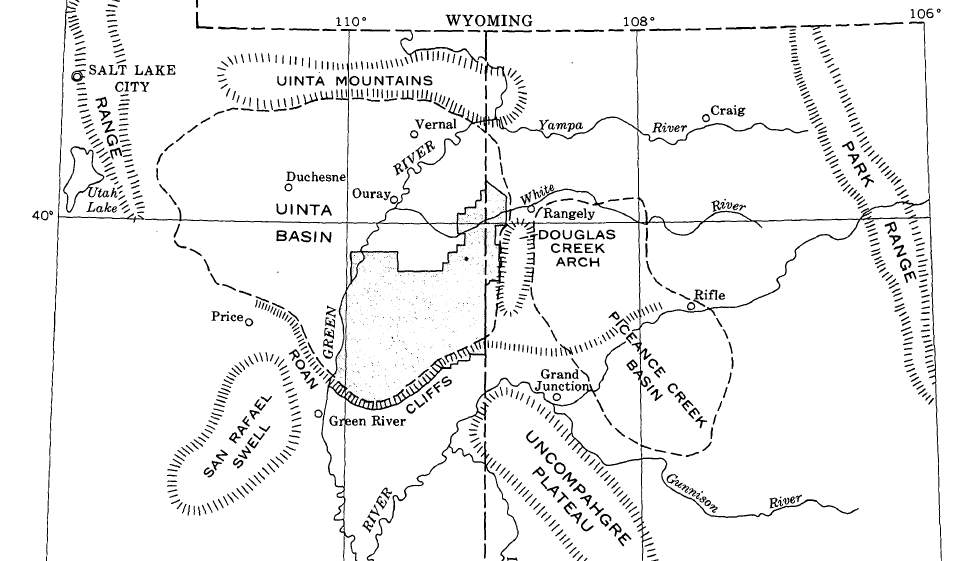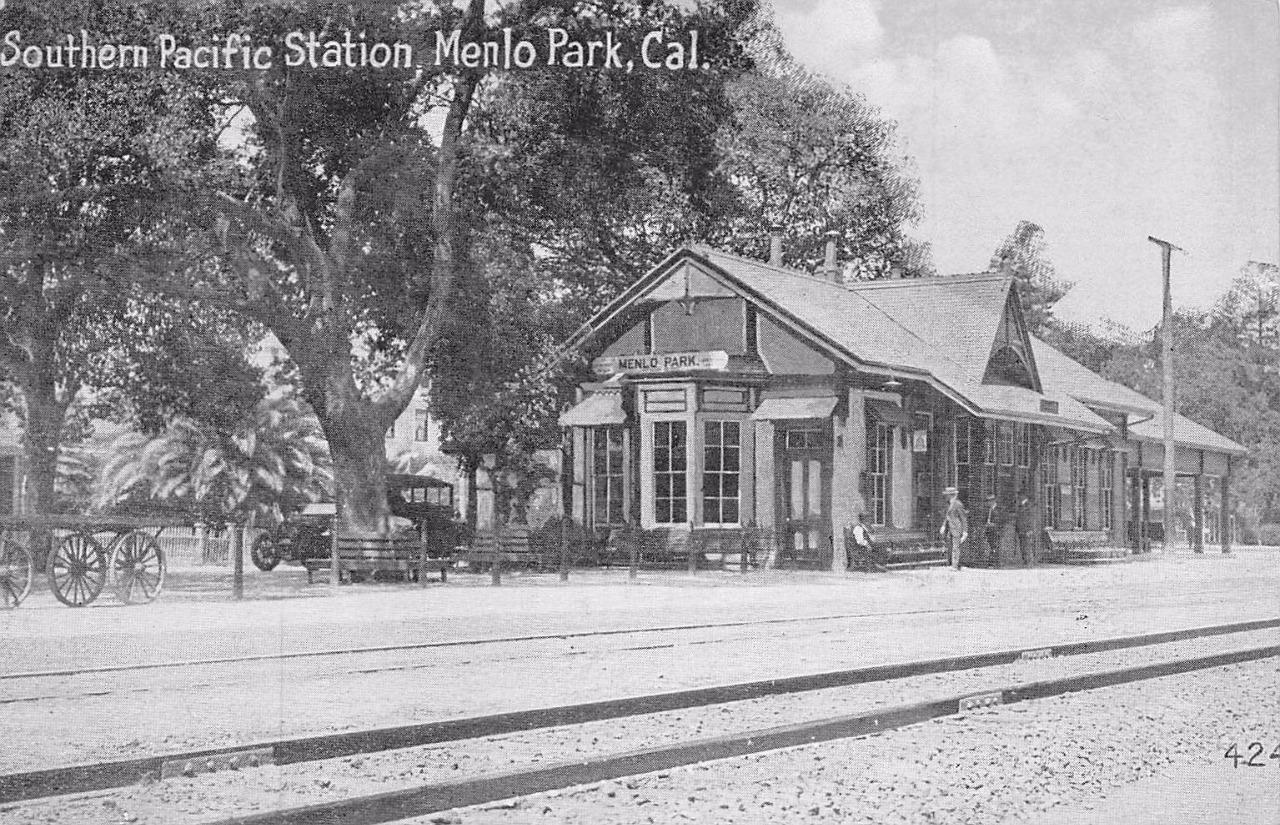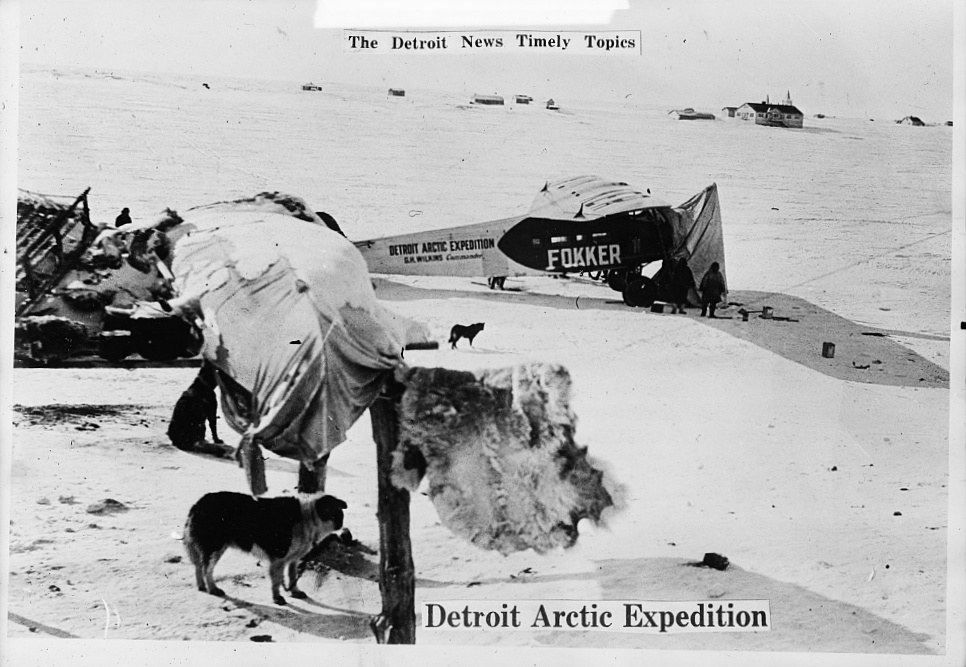|
Frank C. Whitmore, Jr.
Frank Clifford Whitmore Jr. (November 17, 1915 – March 18, 2012) was an American geologist including chief of the Military Geology Unit of the United States Geological Survey, vertebrate paleontologist with the Paleontology and Stratigraphy Branch of the United States Geological Survey, awardee of the Medal of Freedom (1945), Medal of Freedom, fellow of the Geological Society of America, fellow of the American Association for the Advancement of Science, List of Penrose Medal winners, Penrose Medal citationist, awardee of the Thomas Jefferson Medal for Outstanding Contributions to Natural Science, Honorable Kentucky Colonel, member of the National Geographic Society Committee for Research and Exploration, founding member of the Society of Vertebrate Paleontology, recipient of the Meritorious Service Award by the United States Department of the Interior, United States Department of Interior. Early life and education Whitmore was born at home in Cambridge, Massachusetts, on Novem ... [...More Info...] [...Related Items...] OR: [Wikipedia] [Google] [Baidu] |
Uintah Basin
The Uinta Basin (also known as the Uintah Basin) is a physiographic section of the larger Colorado Plateaus province, which in turn is part of the larger Intermontane Plateaus physiographic division. It is also a geologic structural basin in eastern Utah, east of the Wasatch Mountains and south of the Uinta Mountains. The Uinta Basin is fed by creeks and rivers flowing south from the Uinta Mountains. Many of the principal rivers (Strawberry River, Currant Creek, Rock Creek, Lake Fork River, and Uintah River) flow into the Duchesne River which feeds the Green River—a tributary of the Colorado River. The Uinta Mountains forms the northern border of the Uinta Basin. They contain the highest point in Utah, Kings Peak, with a summit 13,528 feet (4123 metres) above sea level. The climate of the Uinta Basin is semi-arid, with occasionally severe winter cold. History Father Escalante's expedition visited the Uinta Basin in September 1776. 1822–1840 French Canadian tra ... [...More Info...] [...Related Items...] OR: [Wikipedia] [Google] [Baidu] |
Denver
Denver () is a consolidated city and county, the capital, and most populous city of the U.S. state of Colorado. Its population was 715,522 at the 2020 census, a 19.22% increase since 2010. It is the 19th-most populous city in the United States and the fifth most populous state capital. It is the principal city of the Denver–Aurora–Lakewood, CO Metropolitan Statistical Area and the first city of the Front Range Urban Corridor. Denver is located in the Western United States, in the South Platte River Valley on the western edge of the High Plains just east of the Front Range of the Rocky Mountains. Its downtown district is immediately east of the confluence of Cherry Creek and the South Platte River, approximately east of the foothills of the Rocky Mountains. It is named after James W. Denver, a governor of the Kansas Territory. It is nicknamed the ''Mile High City'' because its official elevation is exactly one mile () above sea level. The 105th meridian we ... [...More Info...] [...Related Items...] OR: [Wikipedia] [Google] [Baidu] |
Menlo Park, California
Menlo Park is a city at the eastern edge of San Mateo County within the San Francisco Bay Area of California in the United States. It is bordered by San Francisco Bay on the north and east; East Palo Alto, Palo Alto, and Stanford to the south; and Atherton, North Fair Oaks, and Redwood City to the west. It is one of the most educated cities in California and the United States; nearly 70% of residents over 25 have earned a bachelor's degree or higher. It had 33,780 residents at the 2020 United States Census. It is home to the corporate headquarters of Meta, and is where Google, Roblox Corporation and Round Table Pizza were founded. Its train station holds the record as the oldest continually operating train station in California. Toponym "Menlo" is derived from Menlo (the anglicized spelling of Irish Gaelic 'Mionloch', meaning 'small lake') in County Galway, Ireland. The name "Menlo Park" was given to a ranch purchased by Irish settlers in honor of their home village in Ire ... [...More Info...] [...Related Items...] OR: [Wikipedia] [Google] [Baidu] |
Smithsonian Institution
The Smithsonian Institution ( ), or simply the Smithsonian, is a group of museums and education and research centers, the largest such complex in the world, created by the U.S. government "for the increase and diffusion of knowledge". Founded on August 10, 1846, it operates as a trust instrumentality and is not formally a part of any of the three branches of the federal government. The institution is named after its founding donor, British scientist James Smithson. It was originally organized as the United States National Museum, but that name ceased to exist administratively in 1967. Called "the nation's attic" for its eclectic holdings of 154 million items, the institution's 19 museums, 21 libraries, nine research centers, and zoo include historical and architectural landmarks, mostly located in the District of Columbia. Additional facilities are located in Maryland, New York, and Virginia. More than 200 institutions and museums in 45 states,States without Smithsonian ... [...More Info...] [...Related Items...] OR: [Wikipedia] [Google] [Baidu] |
National Museum Of Natural History
The National Museum of Natural History is a natural history museum administered by the Smithsonian Institution, located on the National Mall in Washington, D.C., United States. It has free admission and is open 364 days a year. In 2021, with 7.1 million visitors, it was the eighteenth most visited museum in the world and the second most visited natural history museum in the world after the Natural History Museum in London."The World's most popular museums", CNN.com, 22 June 2017. Opened in 1910, the museum on the National Mall was one of the first Smithsonian buildings constructed exclusively to hold the national collections and research facilities. The main building has an overall area of with of exhibition and public space and houses over 1,000 employees. The museum's collections contain over 145 million specimens of plants, animals, fossils, minerals, rocks, meteorites, human remains, and human cultural artifacts, the largest natural history collection in the world. It i ... [...More Info...] [...Related Items...] OR: [Wikipedia] [Google] [Baidu] |
Point Barrow
Point Barrow or Nuvuk is a headland on the Arctic coast in the U.S. state of Alaska, northeast of Utqiaġvik (formerly Barrow). It is the northernmost point of all the territory of the United States, at , south of the North Pole. (The northernmost point on the North American mainland, Murchison Promontory in Canada, is farther north.) Point Barrow is an important geographical landmark, marking the limit between two marginal seas of the Arctic Ocean, the Chukchi Sea to the west and the Beaufort Sea to the east. It was named by English explorer Frederick William Beechey in 1826 for Sir John Barrow, a statesman and geographer of the British Admiralty. The water around it is normally ice-free for two or three months a year, but this was not the experience of the early explorers. Beechey could not reach it by ship and had to send a ship's boat ahead. In 1826 John Franklin tried to reach it from the east and was blocked by ice. In 1837 Thomas Simpson walked 50 miles west to Poin ... [...More Info...] [...Related Items...] OR: [Wikipedia] [Google] [Baidu] |
Brooks Range
The Brooks Range ( Gwich'in: ''Gwazhał'') is a mountain range in far northern North America stretching some from west to east across northern Alaska into Canada's Yukon Territory. Reaching a peak elevation of on Mount Isto, the range is believed to be approximately 126 million years old. In the United States, these mountains are considered a subrange of the Rocky Mountains, whereas in Canada they are considered separate, as the northern border of the Rocky Mountains is considered to be the Liard River far to the south in the province of British Columbia. While the range is mostly uninhabited, the Dalton Highway and Trans-Alaska Pipeline System run through the Atigun Pass (1,415 m, 4,643 ft) on their way to the oil fields at Prudhoe Bay on Alaska's North Slope. The Alaska Native villages of Anaktuvuk and Arctic Village, as well as the very small communities of Coldfoot, Wiseman, Bettles, and Chandalar, are the range's only settlements. In the far west, near the Wul ... [...More Info...] [...Related Items...] OR: [Wikipedia] [Google] [Baidu] |
University Of Tokyo
, abbreviated as or UTokyo, is a public research university located in Bunkyō, Tokyo, Japan. Established in 1877, the university was the first Imperial University and is currently a Top Type university of the Top Global University Project by the Japanese government. UTokyo has 10 faculties, 15 graduate schools and enrolls about 30,000 students, about 4,200 of whom are international students. In particular, the number of privately funded international students, who account for more than 80%, has increased 1.75 times in the 10 years since 2010, and the university is focusing on supporting international students. Its five campuses are in Hongō, Komaba, Kashiwa, Shirokane and Nakano. It is considered to be the most selective and prestigious university in Japan. As of 2021, University of Tokyo's alumni, faculty members and researchers include seventeen prime ministers, 18 Nobel Prize laureates, four Pritzker Prize laureates, five astronauts, and a Fields Medalist. Hist ... [...More Info...] [...Related Items...] OR: [Wikipedia] [Google] [Baidu] |
Yangtze
The Yangtze or Yangzi ( or ; ) is the longest river in Asia, the third-longest in the world, and the longest in the world to flow entirely within one country. It rises at Jari Hill in the Tanggula Mountains (Tibetan Plateau) and flows in a generally easterly direction to the East China Sea. It is the seventh-largest river by discharge volume in the world. Its drainage basin comprises one-fifth of the land area of China, and is home to nearly one-third of the country's population. The Yangtze has played a major role in the history, culture, and economy of China. For thousands of years, the river has been used for water, irrigation, sanitation, transportation, industry, boundary-marking, and war. The prosperous Yangtze Delta generates as much as 20% of historical GDP of China, China's GDP. The Three Gorges Dam on the Yangtze is the list of the largest hydroelectric power stations, largest hydro-electric power station in the world that is in use. In mid-2014, the Chine ... [...More Info...] [...Related Items...] OR: [Wikipedia] [Google] [Baidu] |
Peking Man
Peking Man (''Homo erectus pekinensis'') is a subspecies of ''Homo erectus, H. erectus'' which inhabited the Zhoukoudian Cave of northern China during the Middle Pleistocene. The first fossil, a tooth, was discovered in 1921, and the Zhoukoudian Cave has since then become the most productive ''H. erectus'' site in the world. Peking Man was instrumental in the foundation of Chinese anthropology, and fostered an important dialogue between Western and Eastern science for decades to come. The fossils became the centre of anthropological discussion, and were classified as a direct human ancestor, propping up the Out of Asia hypothesis that humans evolved in Asia. Peking Man also played a vital role in the restructuring of the Chinese identity following the Chinese Communist Revolution, and was intensively communicated to working class and peasant communities to introduce them to Marxism and science (overturning deeply-rooted superstitions and Chinese creation myths, creation myths). ... [...More Info...] [...Related Items...] OR: [Wikipedia] [Google] [Baidu] |
Army Specialized Training Program
The Army Specialized Training Program (ASTP) was a military training program instituted by the United States Army during World War II to meet wartime demands both for junior officers and soldiers with technical skills. Conducted at 227 American universities, it offered training in such fields as engineering, foreign languages, and medicine. The ASTP differed from the V-12 Navy College Training Program in producing technically trained personnel rather than officers as its primary goal, though recruits were told that they had the opportunity to become officers upon completion. The program was approved in September 1942 and implemented in December of that year. History Inception After the attack on Pearl Harbor sparked U.S. entry into the war, the Army suspended certain advanced elements of Reserve Officers' Training Corps (ROTC) training. This was a particularly problematic situation for the nation's numerous land-grant universities, whose constitutions include the legal agreemen ... [...More Info...] [...Related Items...] OR: [Wikipedia] [Google] [Baidu] |

%2C_the_Indian_territories.jpg)







